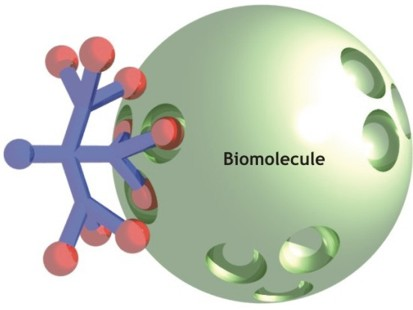Top 10 Bizarre Allergies
Suggested by SMS
OK, You have found yourself in and out of doctors offices, with no one knowing what is exactly wrong with you. You don’t have a virus, you don’t have an infection and you didn’t hurt yourself. So what could this illness be? An allergy, this is the time our own immune system goes haywire in the present of harmless foriegn particles.
10. Anesthetics

Severe allergic reactions during anesthesia are fortunately rare, occurring only once in every 5,000 to 25,000 anesthetics. Unfortunately, these reactions can sometimes be fatal, with a 3.4% mortality. The most severe form of allergic reaction is known as `anaphylaxis`. During an anaphylactic reaction the patient may experience difficulty breathing, as air passages close up. Swelling of the face and mouth can occur, and a reddish skin rash is also sometimes seen. The heart and blood vessels are severely affected, and this is the hallmark of the condition: the heart rate increases and blood pressure can drop to dangerously low levels.
9. Cell Phones

- Name: Mobile Phone Dermatitis
“Mobile phone dermatitis”, as the rash is being called, may occur especially in people with past reactions to nickel, such as with inexpensive jewelry and with metal snaps on jeans and belt buckles. Treatment with topical steroids and avoidance of future contact (getting a hands-free device) should quickly resolve the problem! Nickel allergy can affect people of all ages and can develop after just one exposure or after repeated or prolonged exposure. Once an allergic reaction has begun, it usually continues for two to four weeks. After your first outbreak, you will always be hypersensitive to the metal. The best way to prevent a rash is to avoid exposure to the metal in all forms.
8. Christmas Tree

- Name: Christmas tree asthma
Though most of us associate Christmas trees with verdant life and joyous merriment, allergists hark back to the fact that a Christmas tree is a decaying organism. Once cut down, nature takes its course and the tree will grow mold to decompose. Such mold irritates the nasal passages, causing sudden involuntary explosions, aka sneezing.
7. Computers

- Name: Electromagnetic Hypersensitivity (EHS)
Triphenyl phosphate – a chemical compound widely used as a flame retardant in the plastic of video monitors and other products – is known to cause allergic reactions in some people. The reactions can range from itching and nasal congestion to headaches.
6. Excersize

- Name: Exercise-induced anaphylaxis
Unfortunately there is such a thing as an allergy to exercise known as exercise-induced anaphylaxis (EIA). Most exercise-induced anaphylaxis is associated with recent food intake either prior to or during exercise. Apparently, the food destabilizes the immune system and exercise triggers the overall response. Often exercising prior to eating can solve the problem. Over-the-counter antihistamines can be used to reduce the response. A last resort is the use of self-injectable epinephrine as is used with bee-sting or sever food allergic reactions.
5. Fruit

- Name: Oral Allergy Syndrome (OAS)
A few bites of raw fruit or vegetable could result in itching or swelling of the lips, inner ears, tongue, throat or roof of the mouth. Known as Oral Allergy Syndrome (OAS), the reaction is caused by an allergic response initially directed to the pollen that crosses over to similar proteins in the foods. In most cases OAS does not require medical treatment. It is best to avoid the offending foods. Often just peeling or cooking the food will reduce the effects. At times, an antihistamine can effectively relieve the symptoms. In adults and children with severe recurrent OAS, immunotherapy (allergy shots) to the pollen have been useful.
4. Beer

It is possible to experience allergic reactions from drinking alcoholic beverages. The alcohol, however, is not typically the reason for these reactions. Another ingredient — such as grapes in wine, various grains in beers (such as hops, barley, rye, corn or wheat), and the addition of yeast (for fermentation of sugars and generation of alcohol) — may be the cause. The symptoms of these reactions may be exactly like those with any other food allergy reaction.
3. Sunlight

Solar urticaria is a form of chronic hives that is caused by exposure to sunlight. People with this condition experience itching, redness and hives on areas of skin exposed to sunlight. At times, symptoms can be confused with a sunburn, although solar urticaria can occur within minutes of exposure to the sun, and goes away much quicker (less than a day) after sun exposure has stopped. A doctor may also recommend the use of antihistamines to prevent or reduce a reaction. Using sunscreen may offer some protection. Also, sunscreens don’t block out ultraviolet rays completely, so you may still experience a skin reaction.
2. Water

- Name: Aquagenic Urticaria
Doctors are still unsure as to why this happens with something as essential as water — one theory suggests that unusual proteins in the system react to the water. And because we’re all made up of 80% water, they is actually allergic to themselves — their saliva, sweat blood and tears all blotch their skin. Aquagenic pruritis is a condition that results after exposure to water of any temperature. Symptoms develop within minutes and may include itching, burning or even a prickly sensation. Most times there are no skin changes, although a faint, bumpy, itchy red rash may occur. The symptoms last from 10 minutes to several hours, and usually are experienced on one or more of the following skin surfaces: Chest, back, arms or legs. While the exact cause of this condition is uncertain, some investigators suggest it is a result of extreme skin sensitivity (but not allergy) to an added ingredient (chlorine, fluoride, others) or mineral present in the water.
1. Sex

- Name: Human Seminal Plasma Hypersensitivity
Medical researchers have found that some women are allergic to their male partner’s seminal fluid, the thick liquid that carries sperm. Doctors know the disorder as “human seminal plasma hypersensitivity.” In rare cases, the allergic response can cause death. But there is good news. The malady can usually be treated by allergists although it takes some effort by concerned, caring male partners. But more about the men’s’ role later. To desensitize a woman’s immune system against semen, doctors can either apply diluted samples of semen to a woman’s vagina every 20 minutes, gradually increasing the concentration over the course of several hours, or the women can receive allergy shots containing small amounts of semen over the course of several weeks. Both techniques require sex two or three times a week to train their immune system.




















That would rock! A medical treatment that requires sex lol. Doctors orders lol
So Electromagnetic Hypersensitivity is caused by the plastic electrical devices are made from, makes me doubt the validity of this whole thread. A clue is in the name – "electromagnetic".